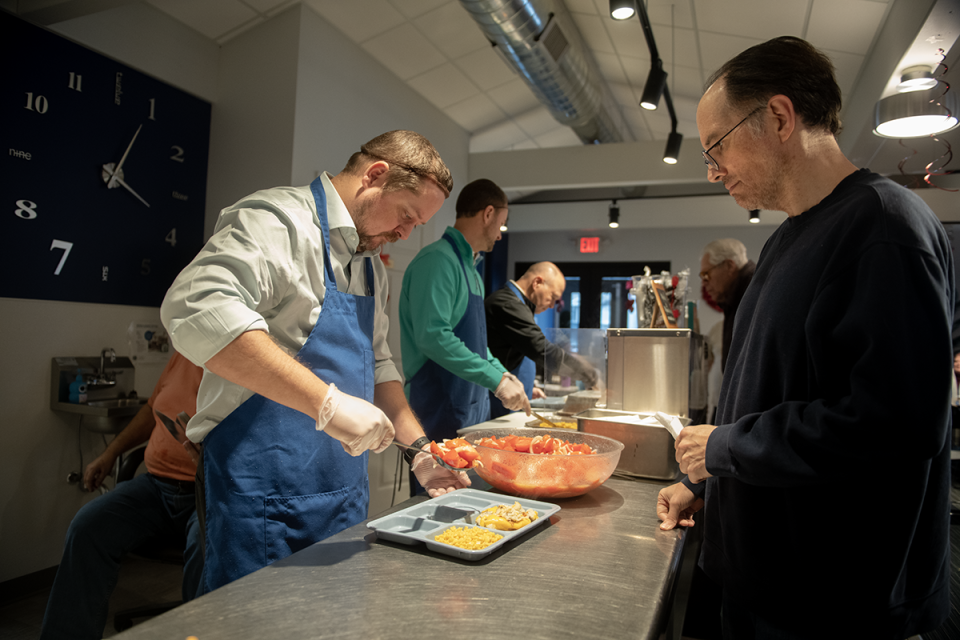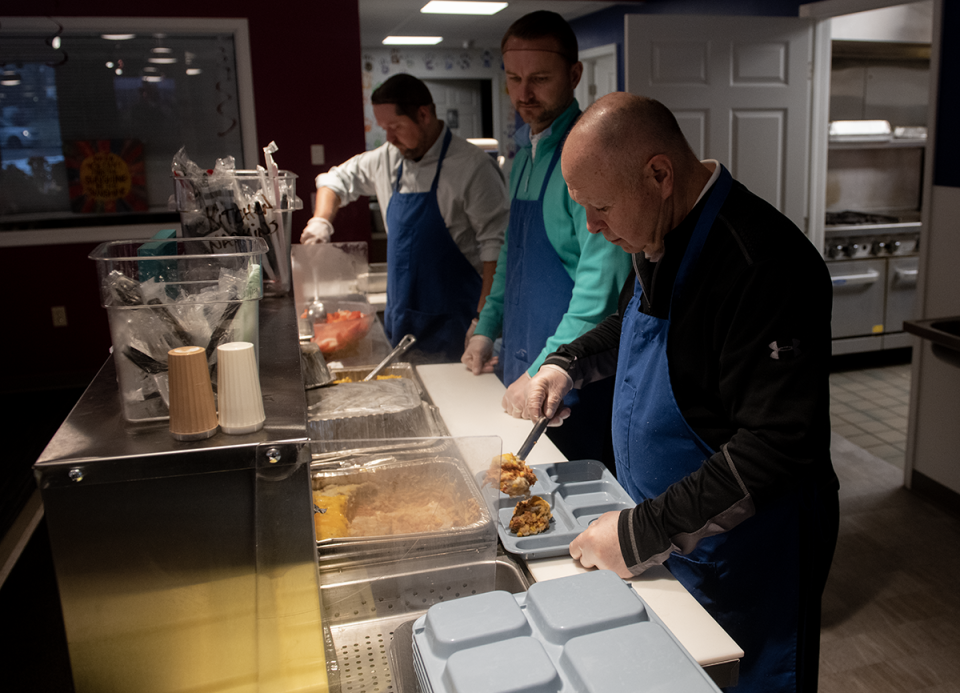'There's definitely a need out there': Portage non-profits for brace food benefit cuts

Right now, Laura Rabich said it's hard to make ends meet because inflation has affected the cost of her basic needs, including food.
She's worried things could get even more challenging in March, when a temporary boost to Supplemental Nutrition Assistance Program (SNAP) benefits is ending.
She's considering getting a part-time job to boost her Social Security benefits.
"I'm struggling so hard," she said. "It would really be nice if I could get back on my feet."

More:My life as a teen in poverty: Simulation lets Portage leaders experience struggles of poor
Leaders of social service agencies in Portage County anticipate the end of extra SNAP benefits could drive up demand at food panties similar to what they experienced during the height of the COVID-19 pandemic.
But COVID-19 federal stimulus funding will help the county's food programs continue to meet the community's needs, county commissioners said.
Last year, Portage County Commissioners decided to share $1 million of its American Rescue Plan Act funds with area non-profit groups, offering grants of up to $200,000. However, those grants were never distributed.
More:SNAP emergency allotments ending in Ohio in February
After hearing about the upcoming reduction in SNAP benefits to households throughout the county, commissioners decided to redirect those grants specifically to food programs.
County Administrator Michelle Crombie told commissioners that non-profits that had applied for grants for other types of programs would be notified that the county would be going a different direction. Commissioner Sabrina Christian-Bennett said the director of one non-profit called her to withdraw his application, citing the upcoming need for food and expressing concerns for a local food pantry.

Why are food stamp benefits being cut in Ohio?
The temporary boost to Supplemental Nutrition Assistance Program benefits put in place during the COVID-19 pandemic will end after February, according to the U.S. Department of Agriculture Food and Nutrition Service.
Here's a guide to when and why the increased benefits are ending, as well as information on how increased Social Security benefits will affect households that also receive SNAP benefits.
During the COVID-19 pandemic, there was a temporary boost to SNAP benefits, also referred to as food stamps.
In Ohio, the increase, known as emergency allotments, will end after the February benefits are issued. Benefit amounts return to pre-pandemic levels for all SNAP households in March, according to the U.S. Department of Agriculture Food and Nutrition Service.
Kellijo Jeffries, director of Portage County Job and Family Services, and Rebecca Abbott, JFS administrator, have warned commissioners that households will see cuts of at least $95 per month when those extra SNAP benefits end.
For many families, those additional benefits were higher than $95, they said.
For example, Abbott said, some single people who are getting the maximum $281 per month in food benefits could lose as much as $181 in pandemic-related benefits.
"It's different for every person," Abbott said. "It really depends on what they're actually eligible for. It's at least $95, but potentially more."
Jeffries said one food program that once provided eggs to clients has been unable to do so because of the rising cost.
"My concern is for people with specific dietary needs," she said. Transportation also can be a barrier to food programs, particularly for people who live in remote areas. "It's just sad right now."
She acknowledged that there are a lot of employment opportunities but said many people who receive SNAP benefits have jobs and use those benefits to supplement their income.
"We still struggle with a living wage," she said.
Portage County 211 line to direct people to emergency food assistance
The county's emergency food and shelter board recently met to discuss the situation. Bill Childers, president and CEO of the United Way of Portage County, agreed to have Job and Family Services direct people concerned about the impact of the cuts to the county's 211 line for referral to resources.
Childers said food is among the top three concerns of people who call the agency's 211 line. But partner agencies are getting less food from the Akron-Canton Regional Foodbank because less surplus food is being offered by the government.
The United Way received 385 calls to its 211 line in December, a quarter of which were concerning food, Childers said. Some callers, he said, were not offered a referral, and while he's not sure why, he suspects that transportation or hours of the food pantry may have presented a barrier.
"The supply-chain issues still aren't resolved," he said. "The Ukraine war is affecting people locally. And the pandemic isn't over, but we all want it to be."
In addition, he said, school children received free lunches during the height of the pandemic without needing to apply. Now, at many schools, qualification requirements are back, which means fewer children are getting those school lunches.

The Akron-Canton Regional Foodbank maintains a database of area food pantries on its website, which can be searched by ZIP code. Many of those programs say donations tend to lag in the winter months, but the demand for food is as great as ever.
Marquice Seward, program director at Kent Social Services, said The Lord's Pantries served groceries to 113 households and 220 individuals in December. The agency also serves lunch daily and dinner on the second and fourth Thursdays, and served 1,306 hot meals to people who came in.
But the agency is anticipating that the need for food will increase once the additional food stamps end for many families, and Seward anticipates that the influx will be similar to what food pantries saw when the pandemic first hit.
"We're anticipating an influx in new people," she said. "It used to be that we only allowed people to come every 30 days." Since the pandemic, she said, people have been able to visit the pantry twice a month, and that will continue.
Nancy, a client of Kent Social Service who didn't want to give her last name because of privacy reasons, said she cooks a lot at home. Because the price of food has increased, she now spends her food benefits at one shopping trip. She found the prices of eggs, vegetable oil, mayonnaise, coffee and pepper to be "outrageous."
"There has to be a reason that the prices jumped so high," she said.

Major Paul Knickerbocker at the Portage County Salvation Army said food is offered from the Salvation Army's Ravenna location on Tuesdays and Thursdays. The Salvation Army also offers a "Red Shield" drive-thru pantry near the Kent State University campus on the first Wednesday of the month, and the fourth Thursday of the month in Windham.
He said he's always surprised to see a long line of cars at the Red Shield pantries.
"There's definitely a need out there," Knickerbocker said.
Reporter Diane Smith can be reached at 330-298-1139 or dsmith@recordpub.com.
This article originally appeared on Record-Courier: Portage food pantries expect more demand when extra SNAP benefits end

